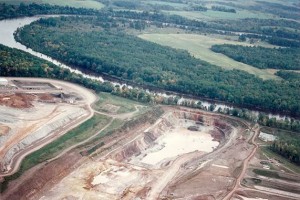By Jack Parker, mine engineer and geologist | March 17th, 2014
The presence of an extremely rich orebody has been proven by thousands of feet of diamond drilling. Of that there is no doubt. An early estimate for the value of the minerals contained was around 4.7 billion dollars.
Kennecott presented their application for permits to mine in 2006. Copies of the document are available. Make sure that you do not get a modified version. With Stan Vitton, Mining Professor at MTU, I, Jack Parker, Mining Engineer and Geologist (resume on-line) was hired by National Wildlife Federation (NWF) to evaluate and report on the mining, geological and rock mechanics sections of the application.
Within a few weeks we recommended that the application be returned to sender as unacceptable. We could not believe that it had been prepared and proffered by professionals. It had not even been proofed for typos. Technically it was incomplete and incompetent, as if prepared by high school students. The regulating agency, the Michigan Department of Environmental Quality (MDEQ), did not reject it, despite a similar evaluation by their hired expert, David Sainsbury, of international consulting firm Itasca, who summed up by saying that the conclusions in the application were not supported by fact.
Stan and I continued to evaluate the proposed Eagle project after the funding had run out – I still do, after eight years. Within a year we had clear proof that the original data from the diamond-drilling had been tampered with, rather crudely, before submitting to mine designers and planners – to make the rocks and the plan look good and acceptable. The truth is that if the data input is corrected, the same plan shows a safety factor lower than 1.0, indicating probably instability of the mine structure as planned.
Instability, hence endangerment to life and limb and property and environment, is obviously not acceptable, yet MDEQ does not recognize it. They ignore it.
There is no provision for simply erasing errors and doing things differently. Part 632, the legislation governing nonferrous mining in Michigan, states that a person presenting false information in the permitting process, or knowingly accepting it, is a felon and should be prosecuted accordingly. Amendments can be submitted but they must be processed thru the initial permitting procedures – including public input.
MDEQ accepts “amendments” without public input. The Humboldt Mill must be full of them.
A legal problem is that – not many years ago – the Environmental Protection Agency (EPA) delegated jurisdiction on mining regulations to MDEQ – and MDEQ now finds themselves inextricably in bed with Kennecott and their successors – as felons. I have pursued the matter with all offices of justice from local cops and all the way to the US Attorney General, and all decline to prosecute this 4.7 billion dollar fraud – “having no jurisdiction.” More clever politics.
The longer the process is drawn out – the worse it gets. As far as I am concerned the details, such as water quality “exceedances”, will go away. At present they constitute a mild digression helpful to the criminals.
All I ask is that we check the application with a group of mining professionals, declare it illegal and fraudulent, then enforce the Michigan law – which is also available online.
Check page 14 (4) of Part 632.


